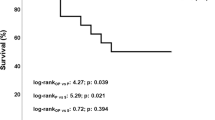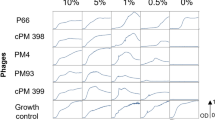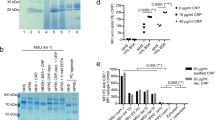Abstract
IN the course of work on auto-antibodies in patients suffering from multiple myeloma marked fibrinolytic activity was discovered in one of the sera. Further investigation revealed that it was contaminated with two kinds of bacteria, one a member of the genus Pseudomonas, the other a strain of Streptococcus faecalis. The role of Pseudomonas was shown to be the conversion of glucose to gluconic acid. In the presence of the latter compound S. faecalis would produce the fibrinolytic agent.
This is a preview of subscription content, access via your institution
Access options
Subscribe to this journal
Receive 51 print issues and online access
$199.00 per year
only $3.90 per issue
Buy this article
- Purchase on Springer Link
- Instant access to full article PDF
Prices may be subject to local taxes which are calculated during checkout
Similar content being viewed by others
References
Sokatch, J. T., and Gunsalus, I. C., J. Bacteriol., 73, 452 (1957).
Astrup, T., and Mullertz, S., Arch. Biochem. Biophys., 40, 346 (1952).
Schachter, D., Science, 126, 507 (1957).
Lassen, M., Acta Physiol. Scand., 27, 371 (1953).
Ratnoff, O. D., and Donaldson, V. H., Amer. J. Cardiol., 6, 378 (1960).
Zini, F., Sperimentale, 102, 36 (1952).
Author information
Authors and Affiliations
Rights and permissions
About this article
Cite this article
KOPPER, P. Fibrinolytic Bacterial Metabolite. Nature 193, 785–786 (1962). https://doi.org/10.1038/193785a0
Issue Date:
DOI: https://doi.org/10.1038/193785a0
This article is cited by
Comments
By submitting a comment you agree to abide by our Terms and Community Guidelines. If you find something abusive or that does not comply with our terms or guidelines please flag it as inappropriate.



